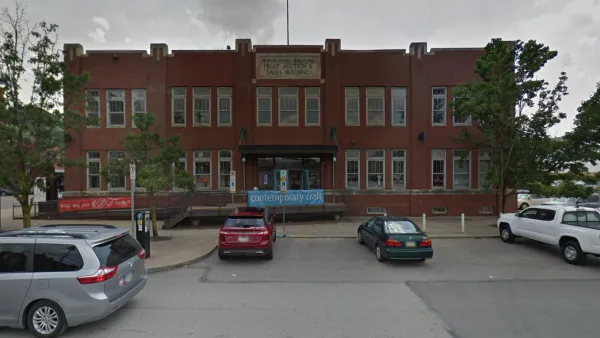Vermont enabled tax increment financing (TIF) for the city of Burlington in 1985, in keeping with a nationwide trend at the time. TIF is still a major player in the state's redevelopment efforts to this day.

Will Jason writes on the subject of tax increment financing (TIF), specifically as deployed as an economic development tool in the state of Vermont.
TIF functions by earmarking property tax revenues from increased real estate values in a defined district. Cities can use the revenue for development, whether public infrastructure or direct subsidies for private projects. However, as research has shown, TIF comes with hidden costs, from the loss of funds for schools and other local public services to a lack of accountability that can often lead to the questionable expenditure of tax dollars.
Jason credits active state oversight for insulating Vermont from some of the common risks associated with TIF, but also writes that Vermont still lacks a clear answer for a very fundamental question: "Does it truly stimulate new economic activity?"
Bruce Seifer, who helped lead the economic development office in Burlington for three decades, is quoted in the article, making the case for the benefits of the TIF program in the city of Burlington.
A study by University of Illinois at Chicago Professor David Merriman published in fall 2018 suggests that TIF programs do not achieve their stated goals of economic development.
The state of Vermont followed suit with its own study:
Last year, at the direction of the legislature, Vermont’s Legislative Joint Fiscal Office published a study that examined the performance of the state’s 10 active TIF districts. Comparing projected TIF revenues against revenues under a hypothetical scenario with no TIF, the study projects that from 2017 to 2030 TIF will cost the state about $68 million in school revenue (Vermont has an unusual statewide funding system for schools), and cost municipal general funds a total of $43 million, although it didn’t account for non-property tax revenues. It concluded that the economic benefits of TIF are uncertain.
Still, Vermont and its communities remain bullish on TIF, and Jason describes the state's approach to the program as effectively safeguarded against risk.
FULL STORY: Vermont Attempts a Kinder, Gentler TIF—But Will it Work?

Analysis: Cybertruck Fatality Rate Far Exceeds That of Ford Pinto
The Tesla Cybertruck was recalled seven times last year.

National Parks Layoffs Will Cause Communities to Lose Billions
Thousands of essential park workers were laid off this week, just before the busy spring break season.

Retro-silient?: America’s First “Eco-burb,” The Woodlands Turns 50
A master-planned community north of Houston offers lessons on green infrastructure and resilient design, but falls short of its founder’s lofty affordability and walkability goals.

Test News Post 1
This is a summary

Analysis: Cybertruck Fatality Rate Far Exceeds That of Ford Pinto
The Tesla Cybertruck was recalled seven times last year.

Test News Headline 46
Test for the image on the front page.
Urban Design for Planners 1: Software Tools
This six-course series explores essential urban design concepts using open source software and equips planners with the tools they need to participate fully in the urban design process.
Planning for Universal Design
Learn the tools for implementing Universal Design in planning regulations.
EMC Planning Group, Inc.
Planetizen
Planetizen
Mpact (formerly Rail~Volution)
Great Falls Development Authority, Inc.
HUDs Office of Policy Development and Research
NYU Wagner Graduate School of Public Service




























